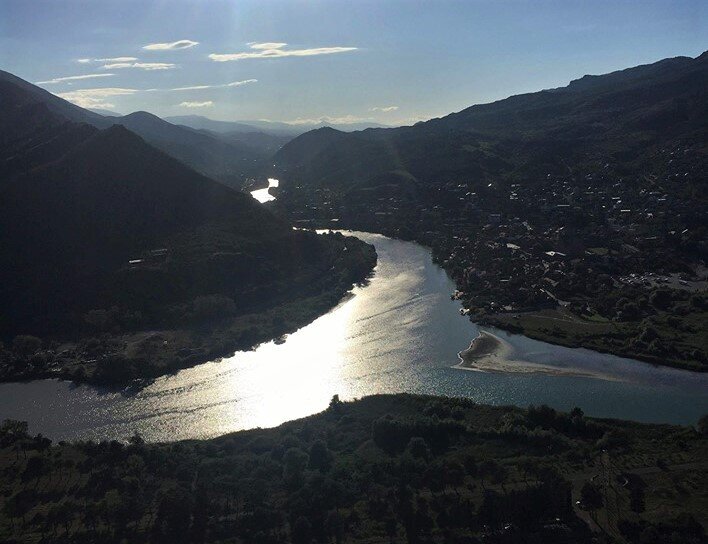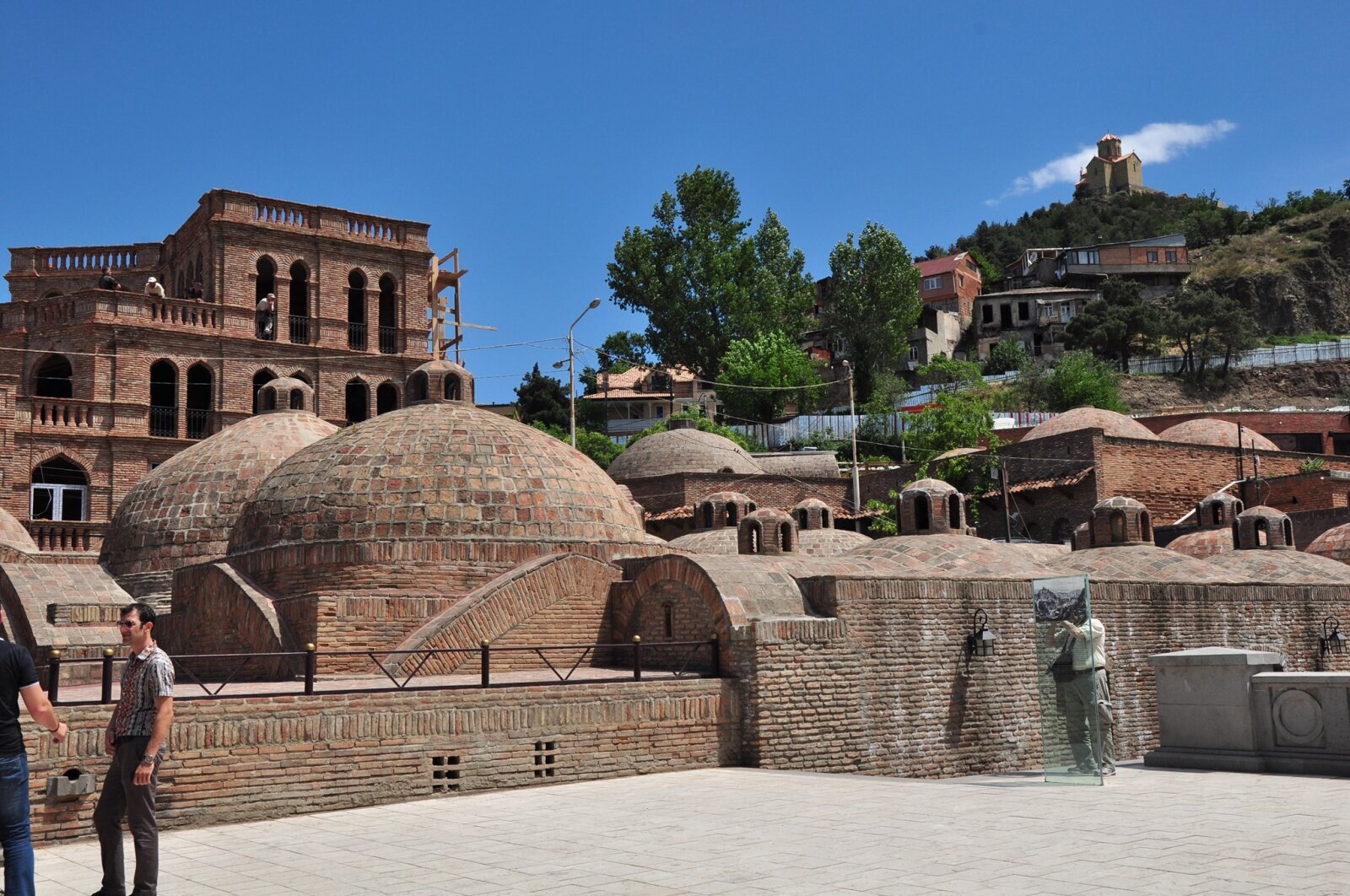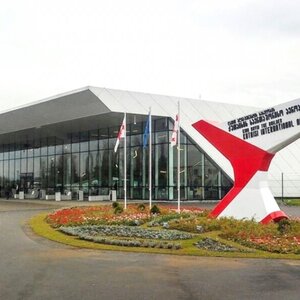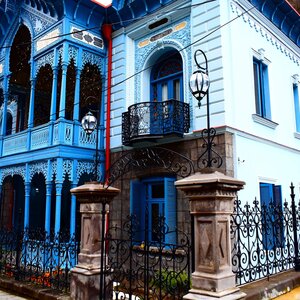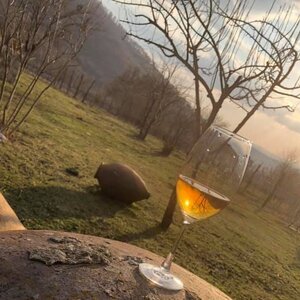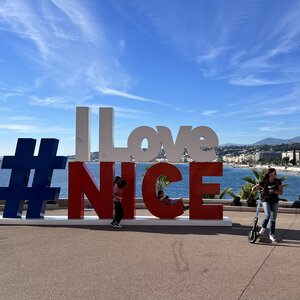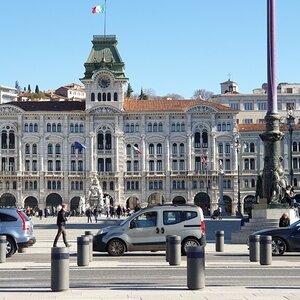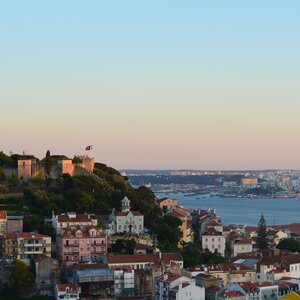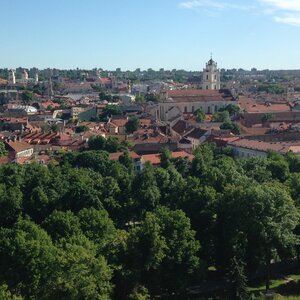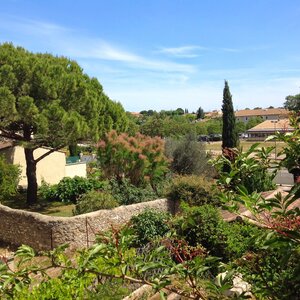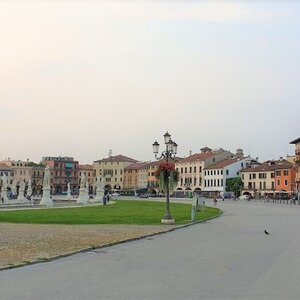Start exploring Tbilisi from its old town and the main square, Liberty Square. This is where the city’s major streets converge and where Tbilisi City Hall is located, and in the center is the Georgian version of the Freedom Monument by Z. Tseretelli: on a tall column, St. George slays a dragon.
All the color and charm of the Georgian capital is concentrated in this area. The 2—3 kilometer route includes several main sights of the center: Anchiskhati Basilica, Rezo Gabriadze Theater and Cafe, Europe Square and Peace Bridge, Sulphur Baths, Narikala Fortress. This is the neighborhood of old Tbilisi with its brightly colored houses, cramped courtyards and lace balconies.
Old Tbilisi was walled in the 5th century, but after the devastating Persian invasion in 1795, the city was practically destroyed. What you will see today is mostly 19th century buildings.
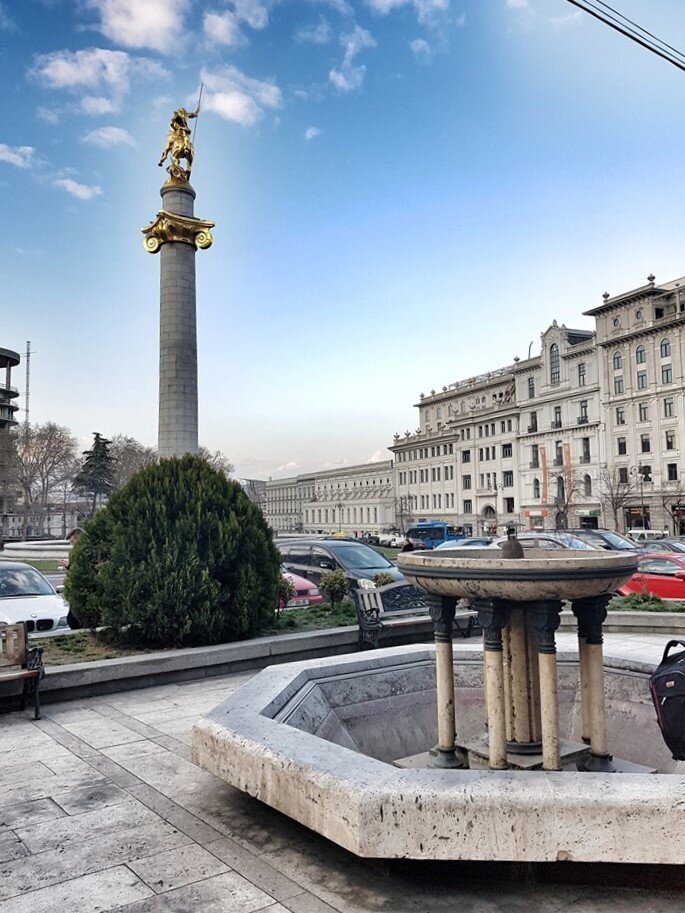
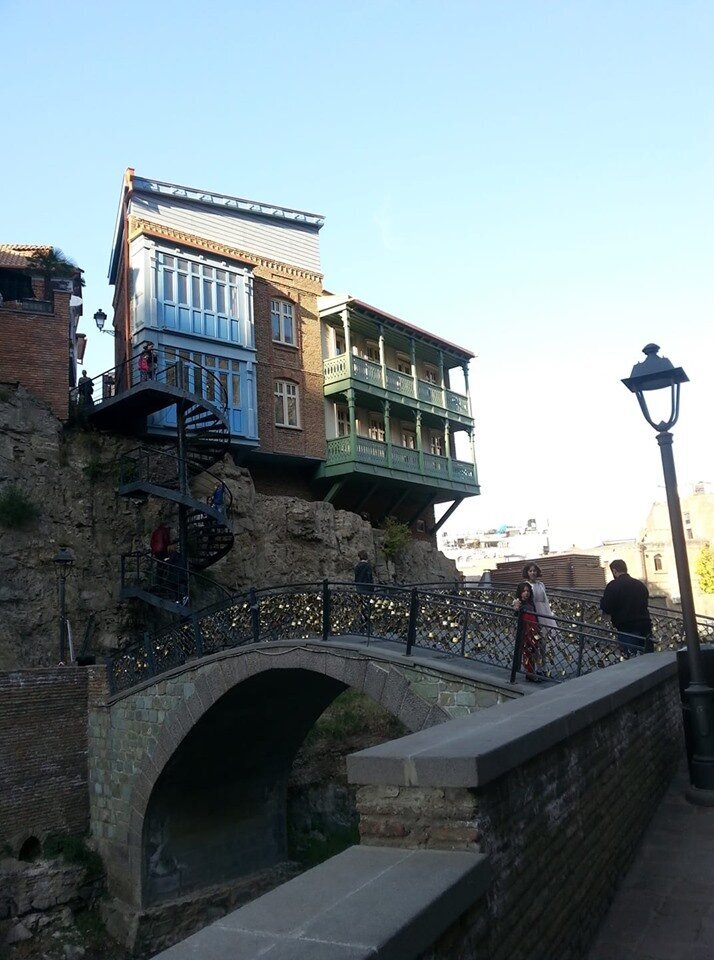
Anchishat church
Going down the right side of Pushkin Street from the central square, you will get to the Anchiskhati Basilica. By the way, this street passes over an overpass, under which you can see the remains of ancient walls. These are excavations of ancient city buildings, you can go down there and have a look.

The small church dedicated to the birth of the Virgin Mary is the oldest surviving church in Tbilisi, built as early as the 6th century. During the wars with the Turks and Persians, the church was destroyed several times and then revived. Since the 17th century, the oldest icon of the Savior was kept here, which was transferred here from the Anchii Cathedral in Tao-Klarjeti. Today, this icon, painted in the rare technique of encaustic (hot wax paint) is kept in the State Museum of Art of Georgia.
Georgia State Museum of Art
The museum where the Anchiskhati icon is kept is located near Freedom Square, at 1 L. Gudiashvili St. It also exhibits paintings by Niko Pirosmani. Perhaps, the museum is worth visiting if you are interested in painting: there are 14000 exhibits, most of which are works of Georgian authors for the last thousand years. Where else in the world can you see such rare Georgian paintings?
- Museum opening hours: every day, except Monday, from 10:00 to 17:30.
- Ticket price: adult — 3 GEL, school — 0.5 GEL, children under 6 years old — free of charge.
- Website: State Museum of Art of Georgia
Gabriadze Marionette Theater and Café Gabriadze
Next door to Anchiskhati is the marionette theater and the cafe of the famous director and playwright Rezo Gabriadze. They used to be called «Don’t Grieve!», today they are called after the director’s surname. The theater is small, only for 80 spectators. The director himself creates puppets, writes plays for them and brings them to life on the theatrical stages of many cities around the world.
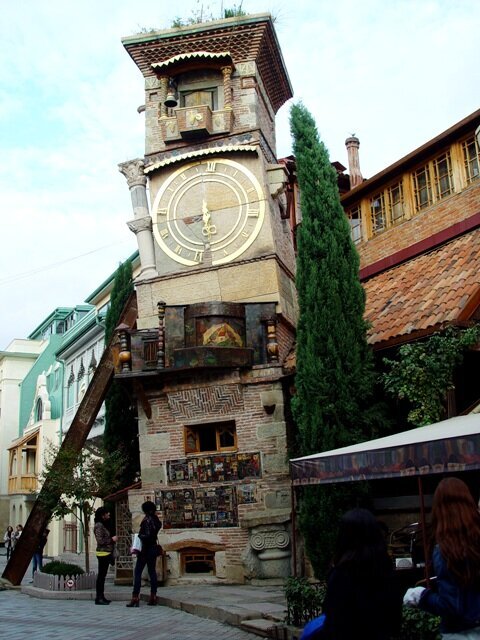
The cafe has original home cuisine, unusual desserts, and the interior is entirely created by Gabriadze himself. The furniture in the establishment is hand-painted by the director, and you will see familiar quotes and plots from his films: «Oddballs», «Mimino», and «Kin-dza-dza».
The place is very atmospheric. For example, for a romantic evening you will be offered a table in the shape of a heart. There is outdoor seating overlooking the front of the theater and Anchiskhati.
The average bill for two people is 40—60 GEL. The cafe is open from 11:00 to 02:00.
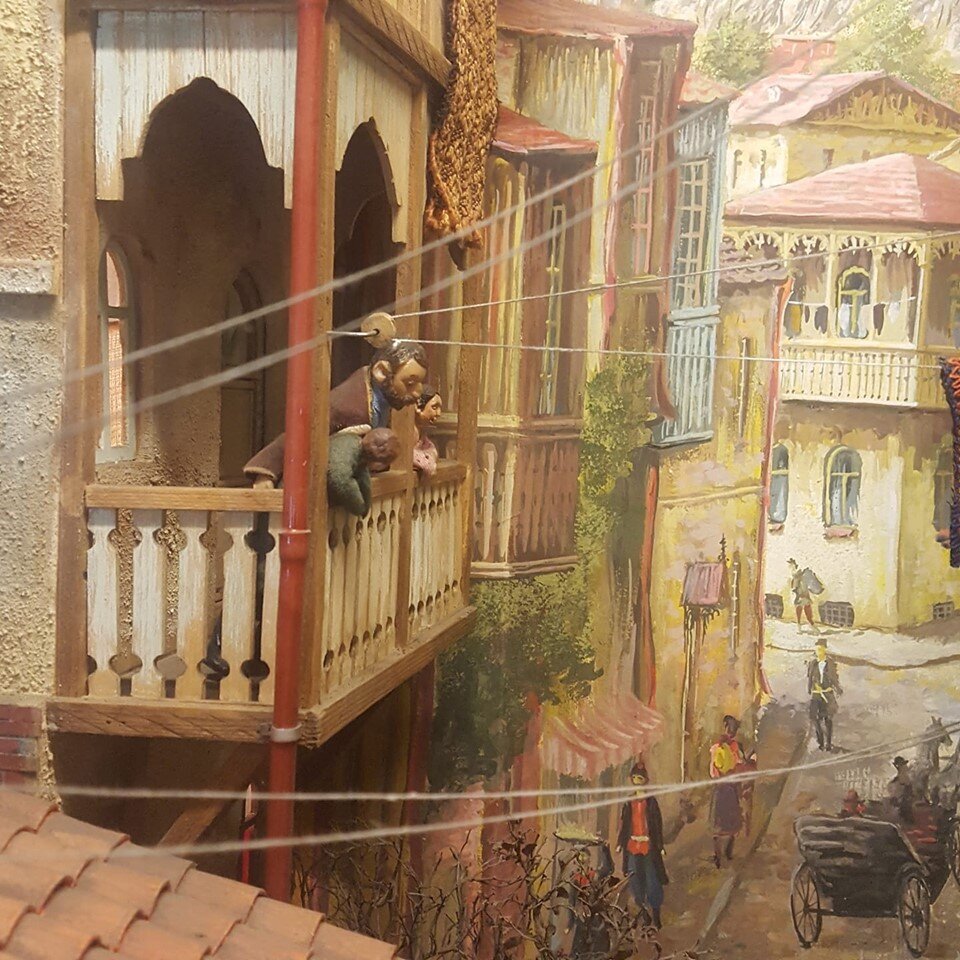
Peace Bridge
This crystal bridge seems to float above the Kura River. It is especially beautiful at night, against the backdrop of the Old Town, when the illumination is turned on. The pedestrian bridge was built after the Georgian-Ossetian war and symbolizes the unity of the world: before sunset, 30,000 light bulbs start transmitting in morse code the names of the chemical elements that make up the human body — anyone, regardless of nationality, race, religion or citizenship.
The townspeople think that the Peace Bridge is too futuristic and does not fit into the old city, but it has become a popular attraction for tourists. It seems to have every chance to become a new symbol of modern Tbilisi.
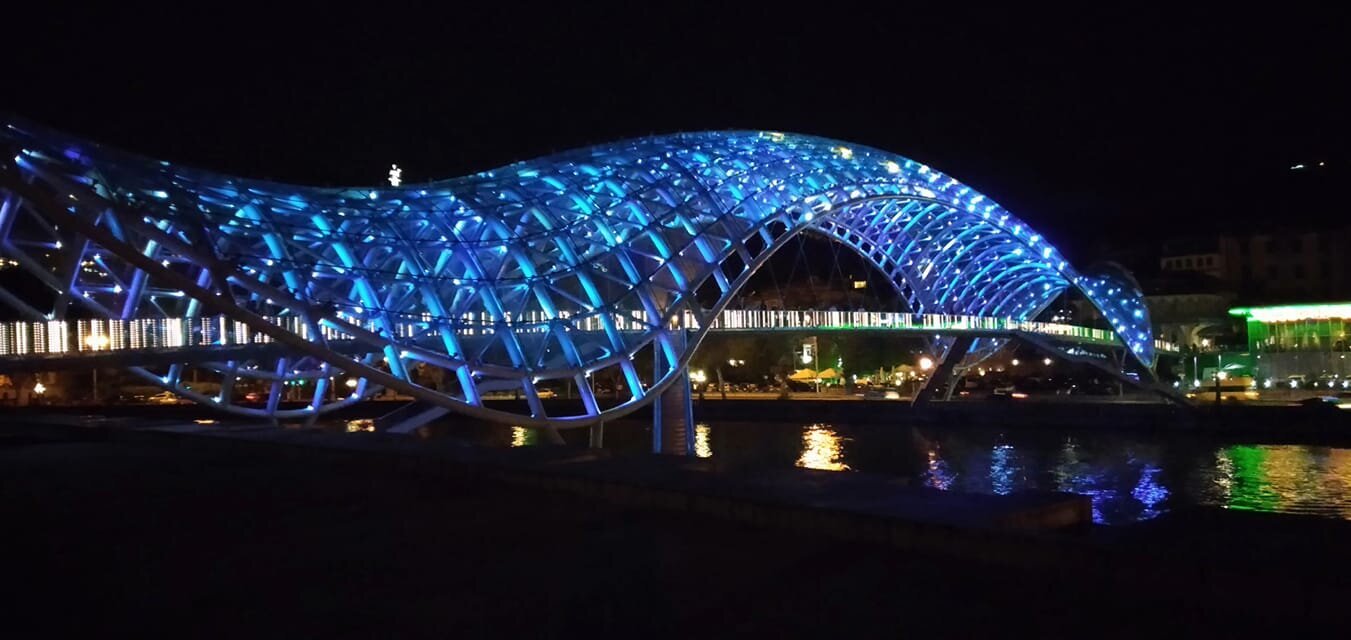
Europe Square
The Peace Bridge connects the Old Town to Europe Square, where concerts, folk festivals and city celebrations take place. If you are lucky enough to get here on one of these days, you will see perhaps the most colorful part of everyday Georgian culture: watch and listen to Georgian songs and dances, taste wine and local delicacies. In the evenings there is a singing fountain, children’s playgrounds and green recreation areas. From here, a cable car will take you up to the Narikala Fortress, which rises majestically above the old town.
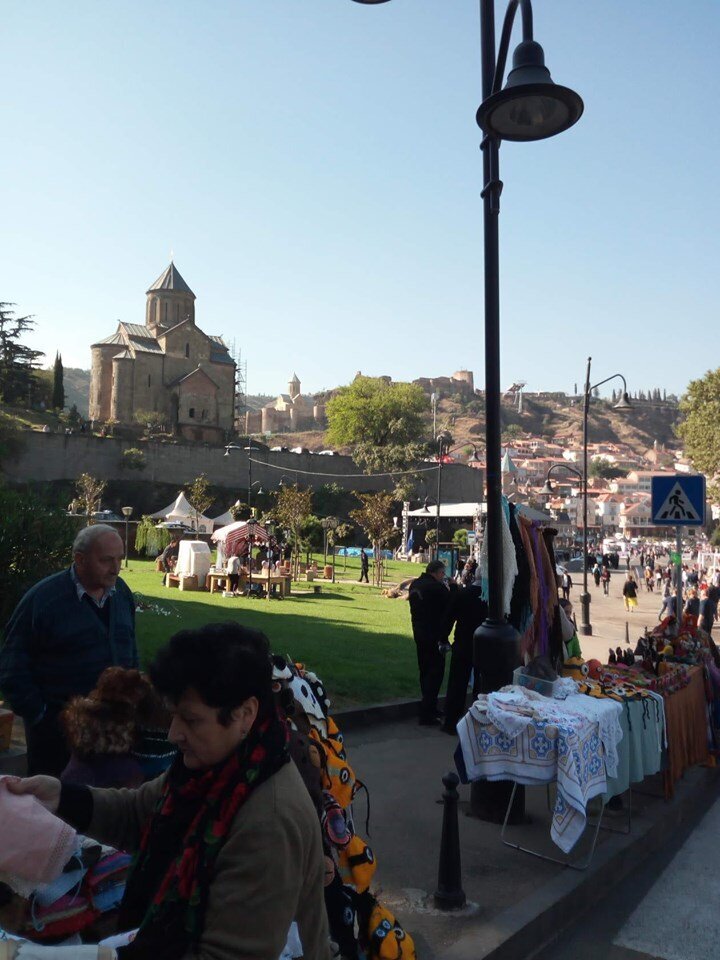
Metechs temple
There is another popular viewing platform near the Metekhi Bridge on Europe Square: on a rock near the Metekhi Temple and the monument to the Georgian king Vakhtang Gorgasali. A third of locals consider this place to be the visiting card of the Georgian capital.
From here, in the middle of the 5th century, Vakhtang Gorgasali began to build Tbilisi, founding a temple and a fortress, which became his residence. The oldest urban settlements are found here.
The temple was repeatedly destroyed under the raids of the Mongols and Persians, but in 1278 it was finally rebuilt. According to legend, the Holy Martyr Shushanik was buried here and Queen Tamara prayed here. In the middle of the 17th century the temple was used as a gunpowder storehouse, and in the beginning of the 19th century prison buildings were built here. In 1988 the temple was returned to the believers.

Sioni Cathedral (Church of the Assumption of the Blessed Virgin Mary)
You can’t pass by Sioni while walking around the Old Town: it is one of the largest cathedrals in Georgia. The cathedral is named after the Mount of Zion in Jerusalem. The temple was founded in the VI century, but after numerous destructions there is almost nothing left of the old walls: the modern building was built in the XVIII century, and painted in the XIX century.
Some Georgian kings, church hierarchs and famous persons are buried in the cathedral. And the main relic is the real cross of St. Nina.
Narikala Fortress
The fortress was founded in the 4th century, and in the 7th century the Georgian king David the Builder expanded it considerably. For centuries, the city’s inhabitants have been fleeing from enemy raids behind its walls, and now they can admire the city from here.
You can go up to the fortress on foot by crossing the Metech Bridge at the monument to Vakhtang Gorgasali, or by cable car. It costs 2 GEL to go up from Europe Square and the cable car will take you over the old Tbilisi. The cable car works 7 days a week, from 12:00 to 24:00.
Sulphur Baths District (Abanotubani)
The Miteh Bridge connects Europe Square and the area of sulfur baths, or Abanotubani in Georgian. There is a whole complex of them standing on natural sulfur springs. The baths were built in XVII — XIX centuries. In one of them — the motley bath, visited A. S. Pushkin during his trip to the Caucasus. Dumas-father also left rave reviews about the baths. All the buildings are made in the style of oriental architecture and each is not similar to the other.
- Prices per hour range from 5 to 500 GEL. The expensive ones are VIP rooms for several people, with swimming pools and massages.
- Opening hours: from 08:00 to 24:00, every day.
- Website: Sulphur Baths of Tbilisi
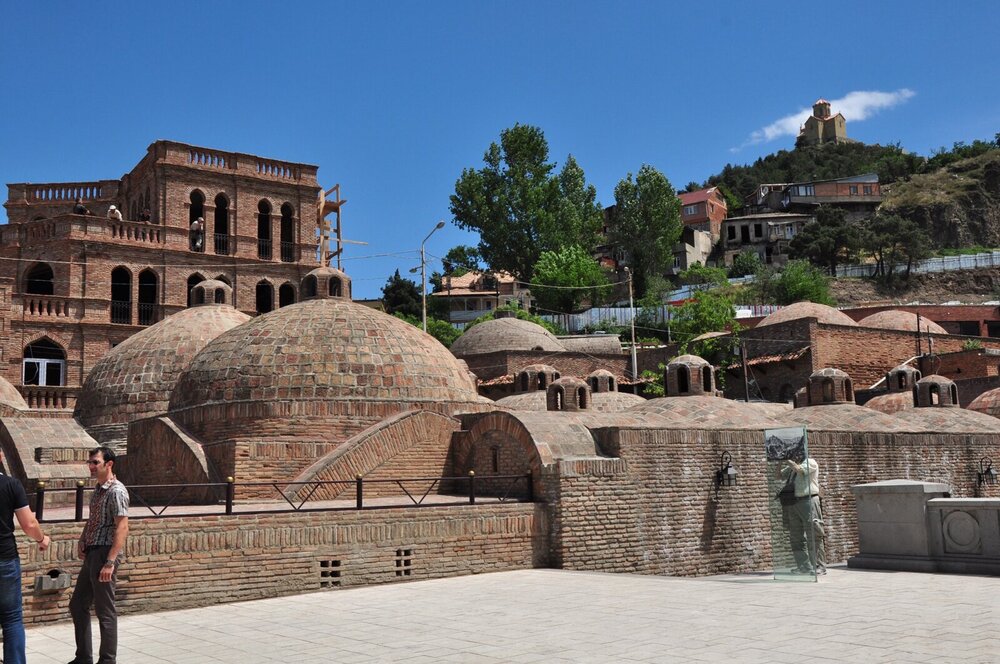
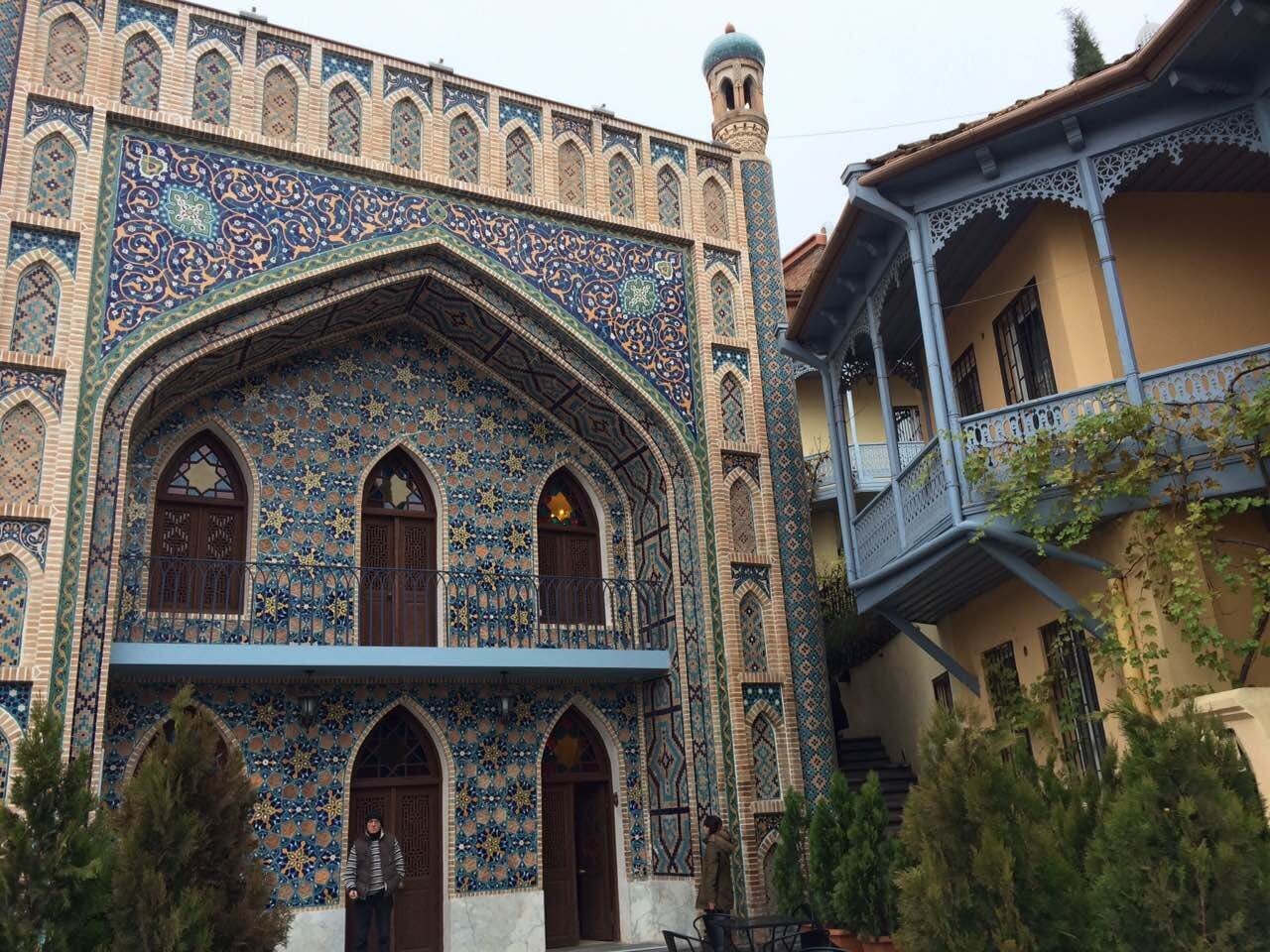
Park on Mtatsminda Mountain
Perhaps the most popular viewing platform is on Mount Mtatsminda, which rises right in the center of the city. On its top there is a park of the same name, Funicular restaurant, cafes and a TV tower. This is the highest point of Tbilisi. People go up to Mtatsminda Park to walk, look at the city, have a snack in the fresh air with hot doughnuts (1 GEL) and drink the famous Lagidze water (2 GEL).
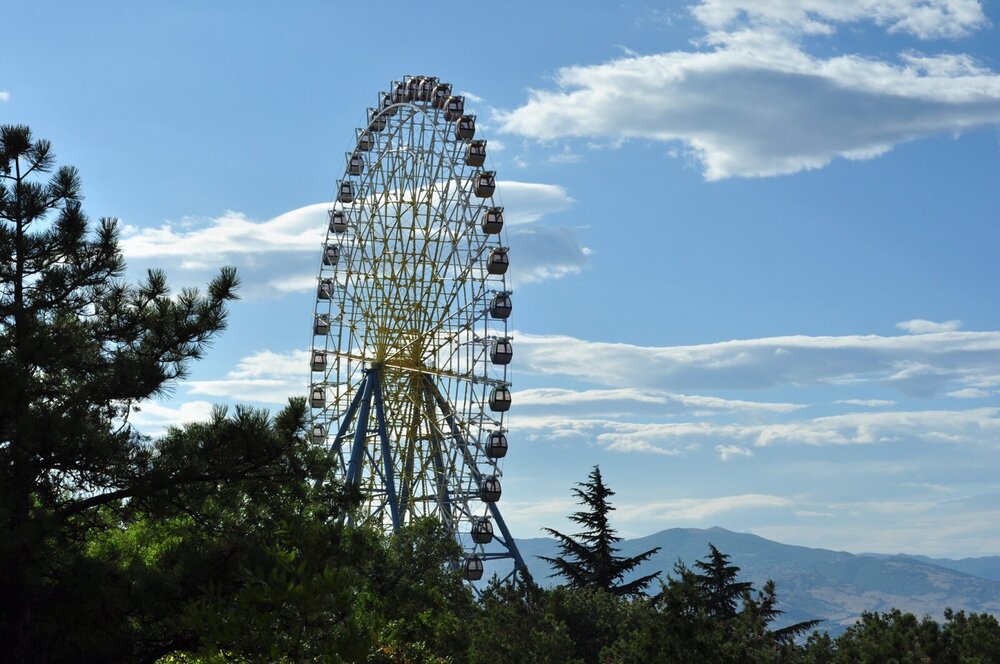
The park is especially loved by children. There are rides for the very young, including water rides. For older kids, there are roller coasters, a Ferris wheel and other attractions, and a wax museum. The territory of 100 hectares has its own Jurassic Park and recreation areas.
- The price of all attractions ranges from 2 to 5 GEL. On the territory of the park payment is made with a card, which you need to buy at the ticket office at the entrance and credit the amount you are ready to spend.
- Working hours: from 12:00 to 23:45. I recommend visiting Mtatsminda Park in the morning.
- Website: Mtatsminda Park
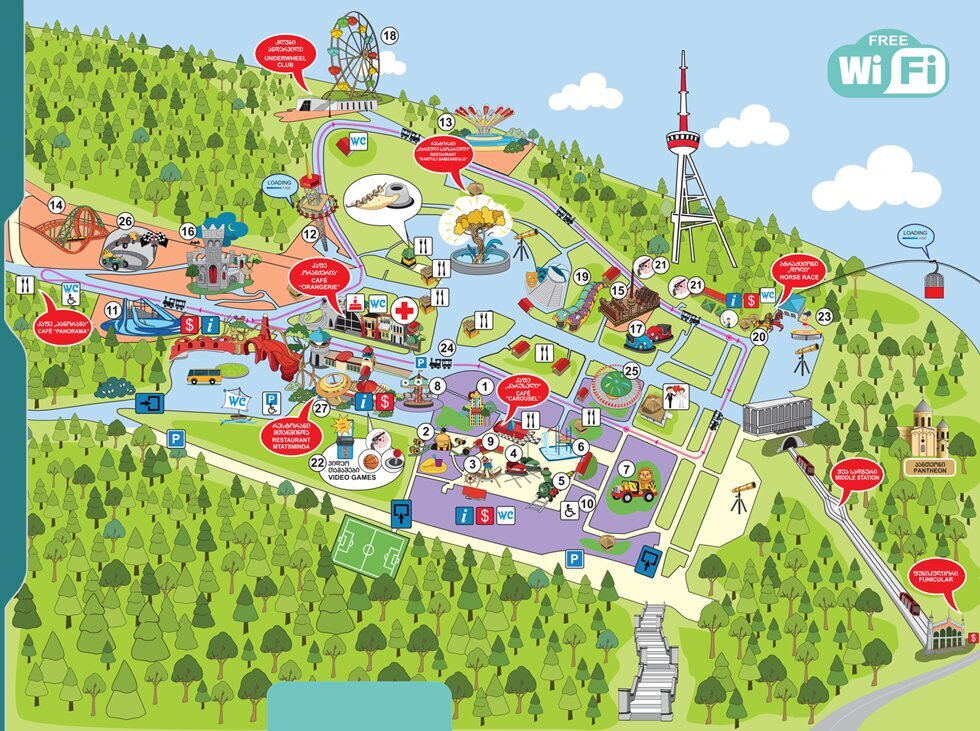
Funicular
There is a highway to the park, but it is faster and more interesting to get here by funicular. The station is located near Vilnius Square on Chonkadze Street, above the Parliament on the central Rustaveli Avenue. The ride takes 6 minutes and costs 3 GEL. The funicular stops at the intermediate station where you can get off and visit the Pantheon of prominent public figures and St. David’s Church. It works from 09:00 to 23:30, but remember that at 23:00 you can’t go up. At this time, the last carriage from the top returns.

This is a leisurely program for two days in Tbilisi. If you have time, visit the ancient capital of Georgia — Mtskheta, which is located 15 km from Tbilisi. There are famous monuments here — Jvari Monastery and Svetitskhoveli Temple, and two rivers meet: Aragvi and Kura. According to legend, in this monastery a monk told Lermontov the story that formed the basis of «Mtsyri», and the poem begins with the following lines: «A few years ago, there was a monastery where the streams of the Aragvi and Kura rivers, merging together and embracing each other like two sisters, were noisy.
